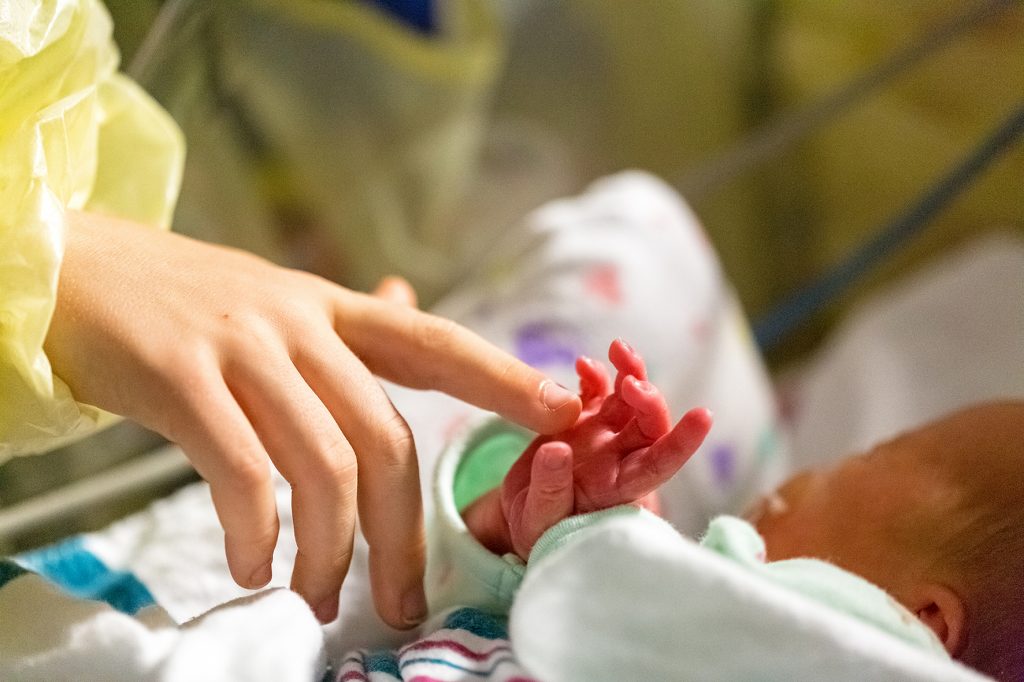CDC updates recommendations for Staphylococcus aureus in NICU

Staphylococcus aureus remains a frequent source of infection in neonates, particularly affecting premature and critically ill infants.1 While infants may acquire S. aureus as part of their normal developing microbiota, colonisation predisposes them to an invasive infection – increasing their risks of mortality, morbidity, length of hospital stay, and cost of medical treatment. 2-6
Considering the burden of S. aureus infections in vulnerable neonates, the Centers for Disease Control and Prevention (CDC) has developed guidelines for the prevention and control of S. aureus in neonatal intensive care units (NICUs).7 These guidelines were recently updated based on a systematic review of literature published through August 2019.
Recommendations from the CDC include7:
- To perform active surveillance testing for aureus colonisation in NICU patients when there is an increased incidence of S. aureus infection or in an outbreak setting.
- To perform active surveillance testing for MRSA colonisation in NICU patients when there is evidence of ongoing healthcare-associated transmission within the unit.
- If active surveillance testing for aureus colonisation is implemented for NICU patients, test at regular intervals to promptly identify newly colonised patients.
Two conditional recommendations were also included7:
- If active surveillance testing for aureus colonisation in NICU patients is implemented, consider testing outborn infants or infants transferred from other newborn care units on admission to promptly identify newly admitted colonised patients.
- To consider targeted decolonisation for aureus-colonised NICU patients in addition to the implementation of, and adherence to, appropriate infection prevention and control measures in an outbreak setting, or when there is ongoing healthcare-associated transmission, or an increase in the incidence of infection.
The CDC left several issues unresolved, making no recommendations for the following7:
- The use of active surveillance testing for methicillin-sensitive aureus (MSSA) colonisation in NICU patients to detect ongoing healthcare-associated MSSA transmission.
- The use of universal decolonisation for aureus-colonised NICU patients.
- The optimal decolonisation agent or combination of agents.
- Appropriate procedures to allow discontinuation of Contact Precautions for individual NICU patients who have a history of colonisation or infection with MRSA.
Where evidence was insufficient to formulate evidence-based recommendations, The Society for Healthcare Epidemiology of America (SHEA) has produced a white paper to provide interim guidance on the implementation of S. aureus prevention measures in the NICU.8
While these guidelines focus on reducing the spread of S. aureus from healthcare personnel and the hospital environment, this may be insufficient to prevent all transmissions.7 As parents are known reservoirs from which neonates can acquire S. aureus colonisation, future studies investigating possible interventions targeted at parents should be pursued to further prevent neonatal S. aureus disease.9
References
- Ericson JE, et al. JAMA Pediatr 2015;169:1105–1111.
- Shane AL, et al. Pediatrics 2012;129:e914–22.
- Zervou FN, et al. Pediatrics 2014;133:e1015–e1023.
- Verstraete E, et al. Infect Control Hosp Epidemiol 2014;35:511–518.
- Stoll BJ, et al. JAMA 2004;292:2357–2365.
- Song X, et al. Infect Control Hosp Epidemiol 2010;31:177–182.
- CDC. Recommendations for Prevention and Control of Infections in Neonatal Intensive Care Unit Patients: Staphylococcus aureus (2020). Available at: https://www.cdc.gov/infectioncontrol/guidelines/NICU-saureus/index.html. Accessed 13 November 2020.
- Akinboyo IC, et al. Infect Control Hosp Epidemiol 2020;41:1251–1257.
- Milstone AM, et al. JAMA 2020;323:319–328.











